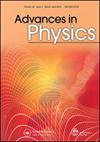铀基薄膜研究进展
IF 13.8
1区 物理与天体物理
Q1 PHYSICS, CONDENSED MATTER
引用次数: 1
摘要
基于硅和过渡金属元素的薄膜主导着半导体行业,并且在所有现代器件中无处不在。还生产了稀土系列元素的薄膜,用于研究和专业应用。铀和二氧化铀薄膜是在20世纪60年代和70年代制造的,但直到21世纪初才有持续的努力。牛津大学(2011年转到布里斯托尔大学)和美国新墨西哥州洛斯阿拉莫斯国家实验室(LANL)启动了重大项目。在这篇综述中,我们介绍了过去20年来使用这些材料发表的工作。在最初由铀金属和UO2制成的外延薄膜的制造方面取得了重要突破,但最近制造了许多其他铀化合物和合金。这些导致了许多不同的实验被回顾,以及一些重要的趋势。与基底的相互作用导致不同的应变,从而导致性质的变化。一个重要的优点是外延膜通常可以由不可能作为大块单晶生产的材料制成。实例是以改性bcc结构形成的U3O8、U2N3和U-Mo的合金。外延薄膜也可用于应用研究。它们代表了极好的表面,正是在这些表面上,核燃料循环中发生了大多数重要反应。例如,燃料包壳的相互作用,以及乏燃料长期储存过程中燃料被水溶解。最后,我们讨论了未来可能的前景,例子包括用于自旋电子学的含铀双层,以及可用于异质结构的超晶格。这样的应用需要对这些系统中的界面交互有更详细的了解,这是未来研究的一个重要方向。本文章由计算机程序翻译,如有差异,请以英文原文为准。
A review of uranium-based thin films
Thin films based on silicon and transition-metal elements dominate the semiconducting industry and are ubiquitous in all modern devices. Films have also been produced in the rare-earth series of elements for both research and specialized applications. Thin films of uranium and uranium dioxide were fabricated in the 1960s and 1970s, but there was little sustained effort until the early 2000s. Significant programmes started at Oxford University (transferring to Bristol University in 2011), and Los Alamos National Laboratory (LANL) in New Mexico, USA. In this review we cover the work that has been published over the last ~20 years with these materials. Important breakthroughs occurred with the fabrication of epitaxial thin films of initially uranium metal and UO2, but more recently of many other uranium compounds and alloys. These have led to a number of different experiments that are reviewed, as well as some important trends. The interaction with the substrate leads to differing strain and hence changes in properties. An important advantage is that epitaxial films can often be made of materials that are impossible to produce as bulk single crystals. Examples are U3O8, U2N3 and alloys of U-Mo, which form in a modified bcc structure. Epitaxial films may also be used in applied research. They represent excellent surfaces, and it is at the surfaces that most of the important reactions occur in the nuclear fuel cycle. For example, the fuel-cladding interactions, and the dissolution of fuel by water in the long-term storage of spent fuel. To conclude, we discuss possible future prospects, examples include bilayers containing uranium for spintronics, and superlattices that could be used in heterostructures. Such applications will require a more detailed knowledge of the interface interactions in these systems, and this is an important direction for future research.
求助全文
通过发布文献求助,成功后即可免费获取论文全文。
去求助
来源期刊

Advances in Physics
物理-物理:凝聚态物理
CiteScore
67.60
自引率
0.00%
发文量
1
期刊介绍:
Advances in Physics publishes authoritative critical reviews by experts on topics of interest and importance to condensed matter physicists. It is intended for motivated readers with a basic knowledge of the journal’s field and aims to draw out the salient points of a reviewed subject from the perspective of the author. The journal''s scope includes condensed matter physics and statistical mechanics: broadly defined to include the overlap with quantum information, cold atoms, soft matter physics and biophysics. Readership: Physicists, materials scientists and physical chemists in universities, industry and research institutes.
 求助内容:
求助内容: 应助结果提醒方式:
应助结果提醒方式:


